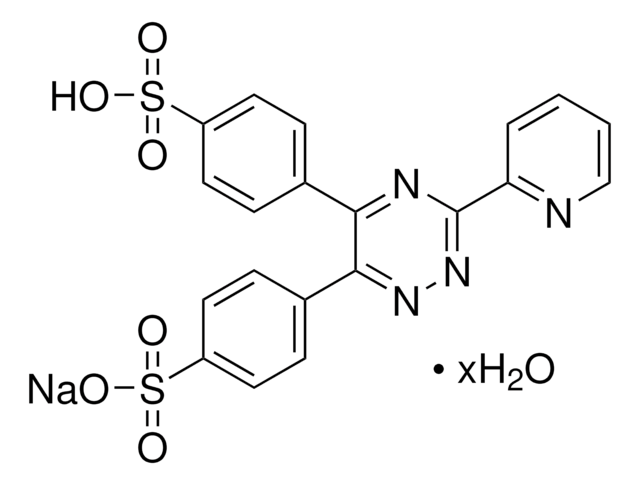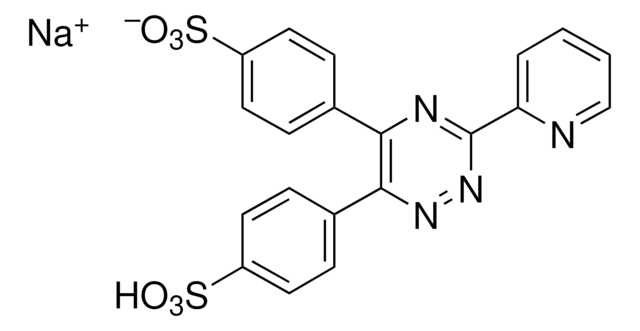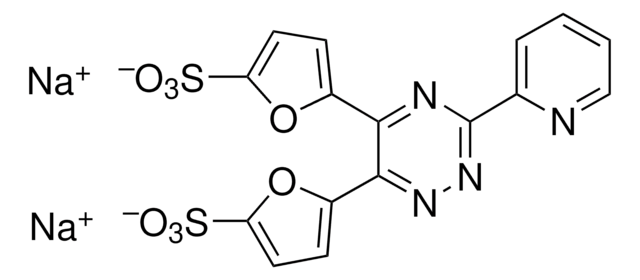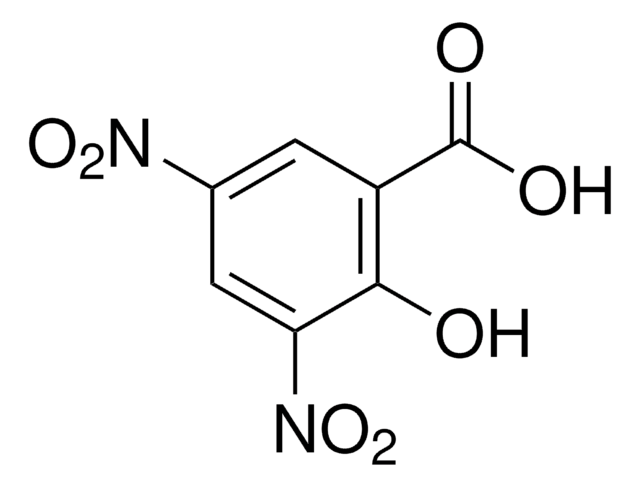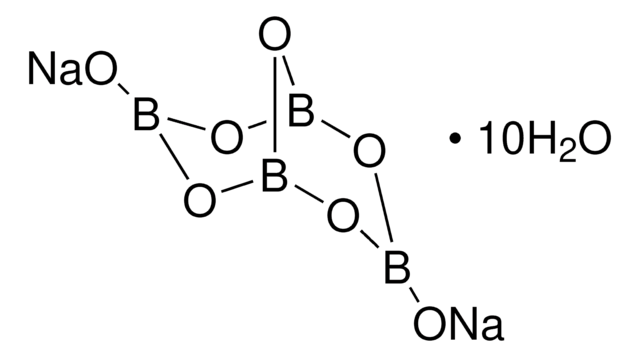P5338
3-(2-Pyridyl)-5,6-diphenyl-1,2,4-triazine-4′,4′′-disulfonic acid sodium salt
Powder
Sinonimo/i:
5,6-Diphenyl-3-(2-pyridyl)-1,2,4-triazine-4′,4″-disulfonic acid sodium salt, PDT disulfonate
About This Item
Prodotti consigliati
Nome del prodotto
3-(2-Pyridyl)-5,6-diphenyl-1,2,4-triazine-4′,4′′-disulfonic acid sodium salt, BioXtra
Nome Commerciale
BioXtra
Livello qualitativo
Stato
powder
Impurezze
≤0.0005% Phosphorus (P)
≤0.1% Insoluble matter
Punto di fusione
≥300 °C
Anioni in tracce
chloride (Cl-): ≤0.1%
Cationi in tracce
Al: ≤0.001%
Ca: ≤0.01%
Cu: ≤0.0005%
Fe: ≤0.0005%
K: ≤0.005%
Mg: ≤0.001%
Pb: ≤0.001%
Zn: ≤0.0005%
applicazioni
diagnostic assay manufacturing
hematology
histology
Temperatura di conservazione
room temp
Stringa SMILE
[Na+].OS(=O)(=O)c1ccc(cc1)-c2nnc(nc2-c3ccc(cc3)S([O-])(=O)=O)-c4ccccn4
InChI
1S/C20H14N4O6S2.Na/c25-31(26,27)15-8-4-13(5-9-15)18-19(14-6-10-16(11-7-14)32(28,29)30)23-24-20(22-18)17-3-1-2-12-21-17;/h1-12H,(H,25,26,27)(H,28,29,30);/q;+1/p-1
ZGVNYCXXBQPDPQ-UHFFFAOYSA-M
Cerchi prodotti simili? Visita Guida al confronto tra prodotti
Descrizione generale
Applicazioni
It has also been used in ABTS radical scavenging assay to determine the antioxidant activity of honey samples.
Codice della classe di stoccaggio
11 - Combustible Solids
Classe di pericolosità dell'acqua (WGK)
WGK 3
Punto d’infiammabilità (°F)
Not applicable
Punto d’infiammabilità (°C)
Not applicable
Dispositivi di protezione individuale
Eyeshields, Gloves, type N95 (US)
Scegli una delle versioni più recenti:
Possiedi già questo prodotto?
I documenti relativi ai prodotti acquistati recentemente sono disponibili nell’Archivio dei documenti.
I clienti hanno visto anche
Il team dei nostri ricercatori vanta grande esperienza in tutte le aree della ricerca quali Life Science, scienza dei materiali, sintesi chimica, cromatografia, discipline analitiche, ecc..
Contatta l'Assistenza Tecnica.